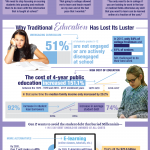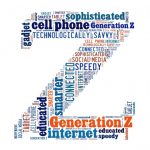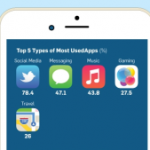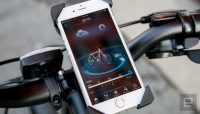Google Groks Generation Z
Google Groks Generation Z
by John Motavalli, Columnist, April 5, 2017
Back when I worked for Henry Kravis’ Primedia, which then owned Seventeen magazine, I remember sitting through a presentation by a Westport, Conn.-based group of youth specialists who had “street teams” trying to figure out the youth culture. I remember thinking, “We own Seventeen, don’t we know?” Having grown up in Westport, I don’t think we were very representative of the nation’s teenagers, unless a group that was 99% white, spoiled, over-privileged, and substance abusing typified our nation’s young. Two of the more prominent classmates were Linda Blair’s sister and the girl who became porn star Marilyn Chambers.
At any rate, I always find it amusing to see huge corporations try to figure out the mind of a school kid. If I remember correctly, there wasn’t much going on in my head when I was 14. Or at least nothing a marketer could use.

But Google is at it again. In partnership with Ipsos, it is presenting “Gen Z,” new insights into the mobile-first mindset of teens. It surveyed 2,013 of them — from age 13 to 17 — last year. All told, Gen Z has purchasing power of $44 billion, and makes up a quarter of the U.S. population.
In a lot of ways, I find its findings depressing. If watching teenagers spend quality time together as they each play with their phone is indicative of Generation Z, it appears to be borne out with this survey. Seven out of 10 teens spend more than 3 hours a day watching mobile video. Let’s segment this. Presumably, 13-17 year olds are in school, spending at least 7 hours a day inside classrooms. Add in the 3 hours they spend watching mobile video, add a couple hours for meals, perhaps another hour traveling to and from school, and what do you have left? Not much. In other words, that’s all they do.
To reinforce this, it quotes “Andrea, 14,” who says that many of her friends sleep only a few hours a night, having spent most of the evening watching mobile video. “And they still go to school the next day,” Andrea asserts. “I kind of think it’s normal because I do that too sometimes.”
Marketers reading this must be kvelling — what perfect little consumers these kids are.
I’m sure Google likes these stats because they are so self-serving but still probably accurate. Google and Ispos say teens get their first phones at about 12, and right away they’re using them to buy stuff, or at least more than half of them are, according to this survey. Why would marketers love this so much? Because all marketers know that impulse buying is the goal, and what could be more impulsive than playing with your phone all day, seeing some product you think you want, and then just clicking a couple of times to get it?
My favorite bit in the whole survey is this finding: “Teens prefer to connect with people via text more than twice as much as messaging apps or in person.” Only 15% of Generation Z in this survey prefer in-person communication. To someone like me, this is simply absurd, but it does seem to be borne out with just a minimal bit of street-team observation.
For many decades, marketers dreamed of the ultimate consumers, people who just consume media uncritically, while distinctions between media and promotion blur. For teens, Google says, shopping online “eliminates friction” (realizing you don’t need something if you actually think about it?). Worse teens are not exactly discriminating shoppers. They say they buy things because they’re “cool,” defined here as stuff friends are talking about, goods they saw advertised on mobile, or “something personalized to me,” whatever that means. Of course the cool factor is perhaps antithetical to prioritizing purchases based on actual need, but that’s not what Google wants anyway.
To further analyze what this generation thinks is cool, Google and YouGov have a whole other survey on that subject. Don’t expect to see anything unexpected in this report. Google and YouGov manage to name-check just about any potential advertiser here, including Jordan, Converse and Vans footwear, beauty care products from Maybelline, Nutrogena, Clinique, NARS, Tarte and Two-Faced, videogames “The Legend of Zelda,” “Cod Black Ops,” “Grand Theft Auto “(still?), “Pokemon,” “Minecraft.” We find it amusing also that Google says reading is “cool,” but they name no books. I think by reading, they mean reading text messages.
Google and YouGov provide a “cool” chart that shows just about every possible youth appeal advertiser grouped according to awareness factor among Gen Z. Up at the top: McDonald’s, Pizza Hut, AT&T, Facebook, YouTube, and you guessed it, Google. And we had to laugh when we noticed the chart has two goals: awareness and cool factor. Facebook did okay on awareness, but when it came to “cool,” Google and YouTube are way ahead. Facebook gets a 5 on the coolness meter; YouTube gets a 9. Which one are you going to advertise on?
One could say without fear of rebuke, that this isn’t a survey about advertising. It is advertising. And very clever advertising.
MediaPost.com: Search Marketing Daily
(57)













